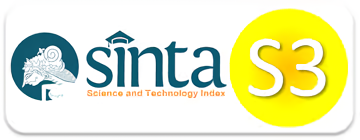Optimizing Digital Talent Development Strategies: A Case Study of Indonesia's Telecommunication Sector Using AHP
Background: PT Telkom Indonesia Tbk (Telkom) is a BUMN (State-Owned Enterprises) company wholly or primarily owned by the Indonesian government and is a pillar for other BUMNs in managing digital talent. The company also faces challenges in preparing digital talent according to the company's future needs. One of these challenges is the existence of a talent war, which results in every company having to be able to compete. This research aims to formulate a digital talent development strategy at PT Telkom Indonesia.
Objective: The substance of this research is to formulate a digital talent development strategy through digital talent attraction, development, and retention.
Method: The method used in this research is Analytical Hierarchy Process (AHP) analysis using primary data and secondary data. The data was obtained from 6 AHP experts, including practitioners, academics, and internal Telkom.
Results: The results of this study indicate that digital talent development is the most crucial factor to be developed at Telkom companies. There is career development, which is a priority for the company to improve. In line with this, the best alternative strategy can be applied to optimize individual development opportunities.
Conclusion: This research shows that the digital talent development factor is the most influential in developing digital talent at PT Telkom Indonesia Tbk.
Keywords: Analytical hierarchy process, BUMN, Digital talent, Talent war.
Copyright (c) 2025 Nurul Khaira, Anggraini Sukmawati, Yunus Triyonggo

This work is licensed under a Creative Commons Attribution-NonCommercial-ShareAlike 4.0 International License.
Copyright notice:
- Authors retain copyright and grant the journal right of first publication with the work simultaneously licensed under a Creative Commons Attribution-NonCommercial-ShareAlike 4.0 International License that allows others to share the work with an acknowledgement of the work's authorship and initial publication in this journal.
- Authors are able to enter into separate, additional contractual arrangements for the non-exclusive distribution of the journal's published version of the work with an acknowledgement of its initial publication in this journal.
- Authors are permitted and encouraged to post their work online (e.g., in institutional repositories or on their website) prior to and during the submission process, as it can lead to productive exchanges, as well as earlier and greater citation of published work (See The Effect of Open Access)
















